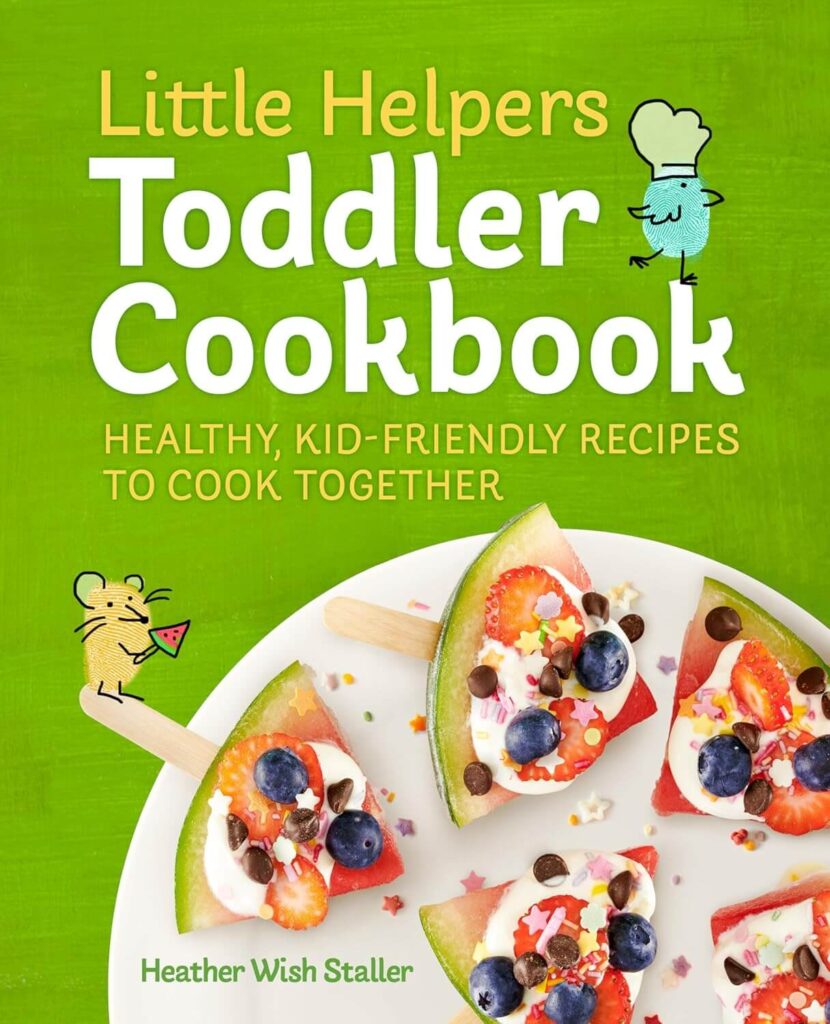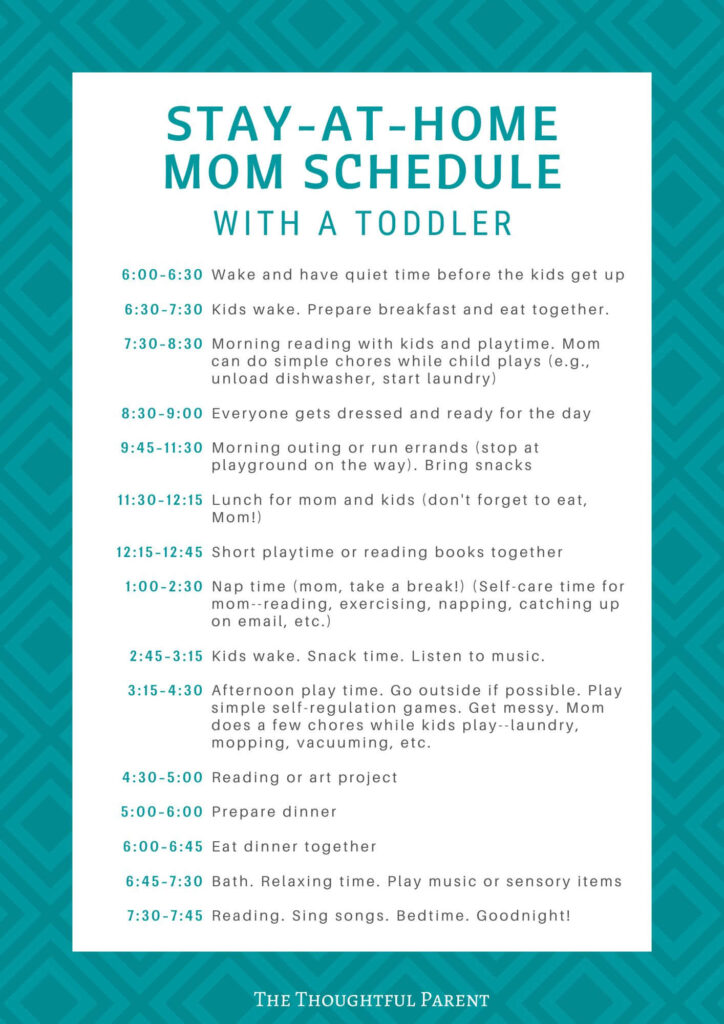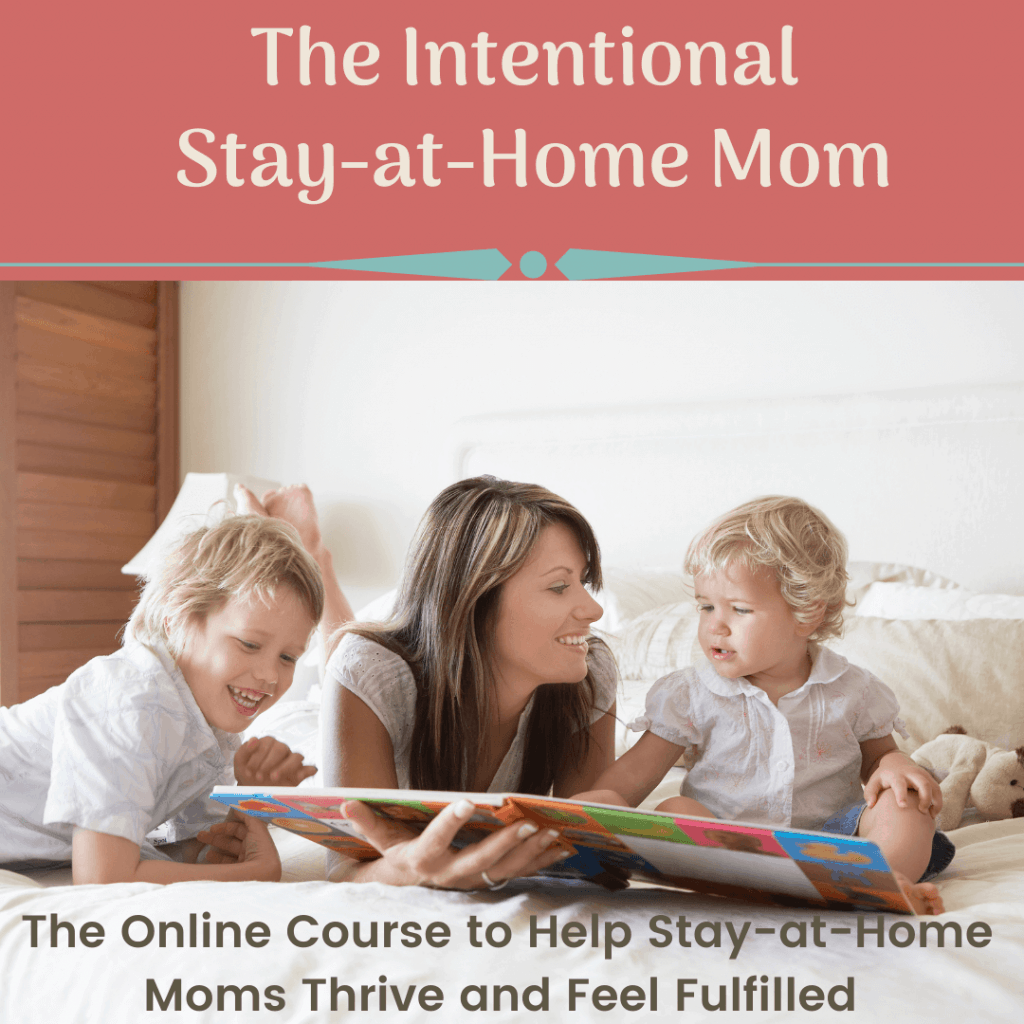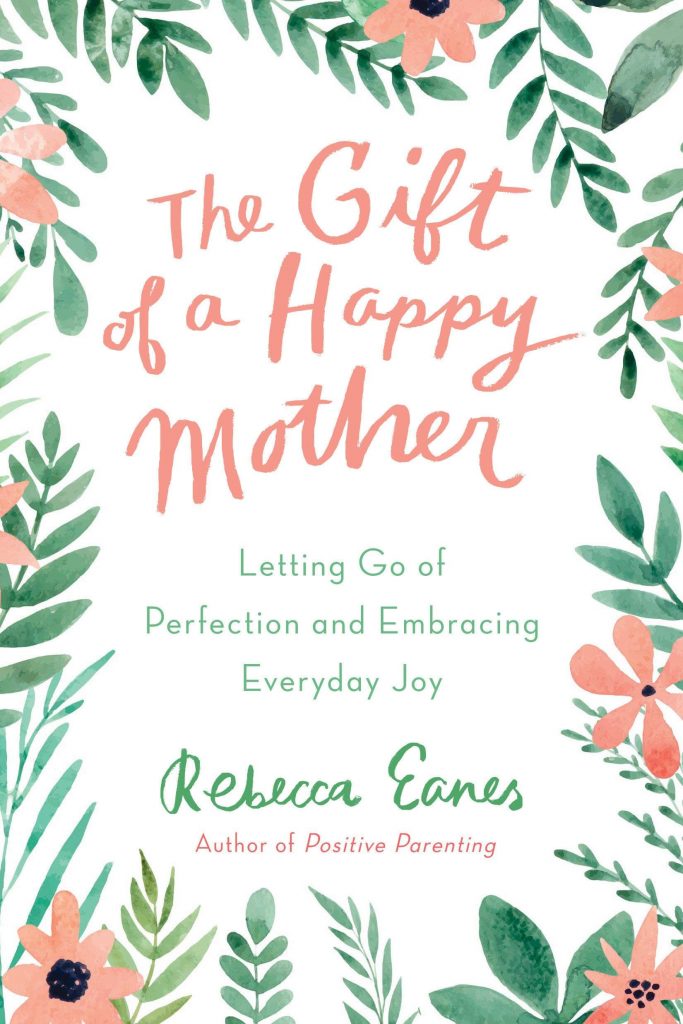Sneak peek: Focusing on 3 aspects of my stay-at-home mom routine has made all the difference in making daily life more engaging for me and my kids
I still vividly remember the day my husband went back to work after the birth of our first son. It was my first day at home with my newborn son…all alone. I was nervous, sleep-deprived, and still getting to know this little bundle whom I loved dearly.
BUT, he cried a lot. Would I be able to calm him without breaking down into tears myself? Would we be able to make it out to the grocery store on our own?
It seems silly to me now, but if you flash back to those moments, you may have felt similar. I knew I wanted to be a stay-at-home mom, but how do I do this new role? How do I organize a stay-at-home mom routine that keeps my son content (and me feeling good)?

Like many stay-at-home moms, I was more accustomed to desks than diapers. I had spent the past 10 years either working in the non-profit world or in grad school. My schedule was my own; I had meetings, I wrote papers, and I did research.
How do I now drop that part of my life and focus all my attention on this tiny bundle of need and tears? I loved him dearly, but I was a little lost.
Over time, of course, we found our way. It took much of the first year for both of us to figure out our new world—together. Babies change so frequently in that first year, that just as soon as I thought I had our routine figured out, he would change. With some reading and reflection, I soon began to focus on 3 primary areas in my stay-at-home mom routine and this helped immensely: activities, identity, and self-care.
Stay at Home Mom Schedule with an Infant
To be honest, in those early months, there aren’t many activities you can really do with a newborn. The same is true with having a schedule. Newborns or infants don’t really follow a schedule or routine until they are closer to a year old. It’s usually pointless to attempt to adhere to a strict schedule with an infant. However, my son (and most babies) do find ways to make their preferences known. Allow this to be your guide as far as how you spend your time with your baby during the day.
Bouncing/Walking
My son loved bouncing! Bouncing in the infant bouncy seat and bouncing while strapped to my chest in an infant carrier. Walking also worked well, as long as he was attached to me; not in a stroller. It was pretty much the only thing that calmed him when he got into fussy periods.
Talking
Most babies love hearing your voice. It doesn’t really matter what you talk about, just talking helps their brain come alive. It also helps you and your baby get “in sync.” Synchronicity is one of the key emotional skills that are developing in the first few months. The more you are in sync with your baby, the easier it will be for you to respond to their needs.
Reading
Some parents may feel weird reading to a young baby since they can’t really respond or even focus on the page. However, research shows that even babies benefit from hearing books read to them. Check out this post for baby books that boost brain development.

Related reading: Classic Books for Babies that Boost Brain Development
Stay at Home Mom Identity
Another crucial aspect of my stay-at-home mom routine wasn’t about scheduling but about myself. Figuring out your mom identity often takes time. Becoming a parent is life-altering in more ways than one. Being the research geek I am, before becoming a mom, I had read tons of books on child development, breastfeeding, etc. but nothing prepares you for how you will feel. I thought I would figure out breastfeeding way sooner than I actually did. I swore my baby would never sleep in bed with us. Well, real life has a way of not going according to your plans.
Related reading: The Child Development Bookshelf: Best Books for Parents and Kids
Breastfeeding did not come as easily as I had expected so my identity at those early nursing moms’ support groups didn’t fit as well as I had thought. I struggled with breastfeeding while those other moms seemed to do it so easily.
After trying out several different moms groups, I eventually found one that was a good fit for me. Having other moms to talk to with whom you share common beliefs, experiences or life views makes a world of difference. For many moms, this type of group helps solidify your mom identity and helps you learn how to be a happy stay-at-home mom. For other moms, it might be something else–a fitness group or a baby storytime group.
Consider what interests you had before you had a baby. This usually helps you figure out a path to find other moms who share your interests. Just because you have a baby doesn’t mean you have to give up your personal interests or identity.
Related reading: There is No “Quiet Quitting” When it Comes to Parenting. But Here’s What You Can Do to Feel Less Overwhelmed
I also figured out that it was okay to “mourn” a bit the passing of my pre-baby identity. That’s not to say that I lost it completely, but it did have to change. I think many moms go through this stage. Especially if you worked full-time before staying at home with kids, the identity shift from the “working world” to the stay-at-home mom world is kind of abrupt. Even in today’s world, being a stay-at-home mom is not exactly highly valued. Sometimes people still really wonder what you do all day.
Developing your mom identity benefits your baby too. The more you can connect with who you are, and what kind of mom you want to be, the more confident and fulfilled you will feel. The more confident you feel, the happier and more engaged you will be with your baby.
Self-Care for Stay at Home Moms
One crucial item that is often overlooked in a schedule for a stay-at-home mom is some time for self-care. As moms, we have a tendency to give and give and forget to take care of ourselves, especially in early motherhood when the needs of our babies are so immediate. The physical and emotional demands of motherhood are real. Finding time for any aspect of self-care is challenging. Many times moms feel guilty for taking time to take care of themselves. The truth is, however, if we don’t, we will eventually succumb to the demands and our physical or mental health might suffer. We get run down and we get sick. We don’t take a break once in a while and our patience starts to wear thin (research backs this one up). A lack of self-care ultimately catches up to us.
After months of nursing every two hours and getting very limited sleep, I learned this lesson myself. My mental health started to suffer. Luckily, I have a very supportive husband who stepped in to give me enough of a break during nights that I could function again.
Over the years, I’ve figured out that self-care is not just about pedicures and spa days. It’s about figuring out what fills you up, what helps you keep your boundaries in place and your mind clear. Self-care looks different for everyone. Here are just a few ideas but it might look completely different for you:
saying “no” to too many commitments or outings
reading while the kids nap
going for a run with the toddler in the stroller
chatting with friends in real life (or sending a card instead of a text)
listening to a podcast in the car instead of Wheels on the Bus
The key is that self-care shouldn’t be a source of guilt. It should make you feel stronger knowing that by taking care of yourself, you are indirectly taking care of your children. Babies, perhaps even more than us, are very in tune with the emotions of their caregivers.
Using the “still face” experiment, studies illustrate how upset babies get when their caregivers are unresponsive to their emotions. This speaks volumes about the need for self-care. If we are so fatigued or worn down, that we cannot respond well to our children, over time they will notice.
How Do I Make a Stay-at-Home Mom Routine?
Whether you’re new to this mom gig or a seasoned veteran, the idea of focusing on activities, identity, and self-care in your stay-at-home mom routine will hopefully help guide your path. The specifics of each person’s daily routine might be different, but I think focusing on these 3 areas it helps you keep the big picture in mind. By finding ways to balance your child’s needs and your own needs, you will no doubt find yourself feeling more confident in your parenting.
Need specific ideas on a stay-at-home mom schedule with infant and/or toddler?
Click to download this sample schedule! It will help you focus on your priorities for the day. It’s just an idea of how to plan your day—adapt it to meet your needs.
Related Resources:







Leave a Reply